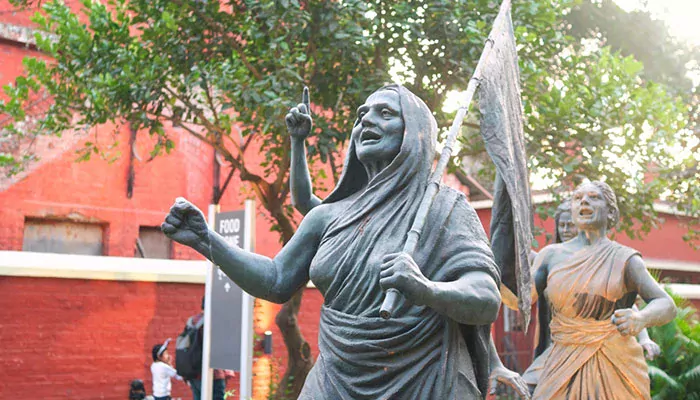
At 73, she walked into bullets, holding the tricolour high — and changed the face of resistance in Bengal.
India's path to independence is paved with the blood of countless young martyrs — teenagers who were hanged, twenty-somethings shot, and students who never returned home. But history often overlooks those who resisted long after life had knocked them down. Among them was a 73-year-old widow from Bengal who refused to let her age, her grief, or even bullets stop her.
Her name was Matangini Hazra.
At a time when women were mostly expected to stay behind the curtains, Hazra stepped forward, walked out, and took charge. She wasn't swept into the movement by chance, she entered it willingly, eyes wide open. What happened on 29 September 1942 on the streets of Tamluk was not just a death, it was a message, a fire ignited in the shadows of silence.
Born in 1869 in Hogla village, West Bengal, Matangini Hazra faced hardships from the beginning. Her family was impoverished. Married at just 12 to a much older man, she was widowed by 18. She had no children, no wealth, no protection—just a life that most would have used as an excuse to step back. But she chose to step forward.
Instead of fading into the background, she immersed herself in social work, gained the trust of villagers, and started carving out a space in her community. That was her first quiet rebellion.
The 1920s saw Mahatma Gandhi's message resound throughout India — reject British rule, stand firm, endure the blows, but never surrender. Hazra heard that call loud and clear.
She wasn't just part of the crowd—she stood out. She was arrested multiple times for protests and picketing, but she returned more determined each time. Locals began to call her "Gandhiburi"—not as a jest but as a mark of respect. She bore that name with pride.
She didn't slow down in her sixties. If anything, she gained momentum. And when the Quit India Movement erupted in 1942, Matangini, now in her seventies, took her place at the forefront.
Tamluk, 29 September 1942.
Thousands gathered. Their aim was to peacefully take control of the local administration, defying British authority. The risk was very real. The British forces were tense, and they had demonstrated before that they wouldn't hesitate to shoot.
Hazra did not flinch. She did not hide behind anyone. She led.
With the Indian tricolour clutched in her hands, she moved through the crowd, her voice rising with each step — Vande Mataram. The police warned them to stop. No one obeyed. Then came the gunfire.
Chaos erupted. But amid the smoke and confusion, one figure kept moving. A frail old woman with a flag held high stepped towards the guns that had just begun firing. Bullets struck her. She staggered but did not fall. Shot again. Still upright. She kept chanting. Kept walking.
It took several bullets to bring her down. But even in that moment — her last — Matangini Hazra ensured one thing:
The flag never touched the ground

The crowd, the British, and India remembered her, but Bengal never forgot. Matangini Hazra is celebrated there as a symbol of resistance—her statues, roads, and stories in schools honour her as a freedom fighter.
Outside Bengal, her name is less known, often missing from textbooks. And yet, her sacrifice — made in full consciousness, in complete defiance, at an age when most are pushed aside — is one of the clearest reminders that age doesn’t define courage.